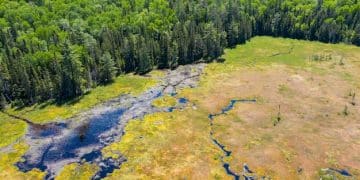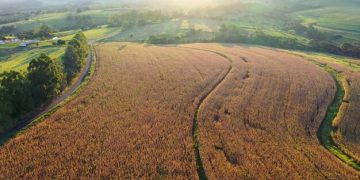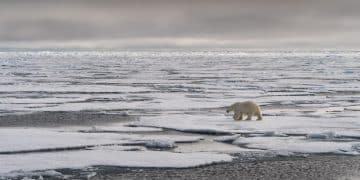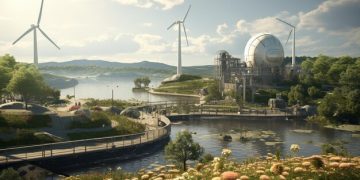US Water Crisis: Immediate Actions for Resource Conservation
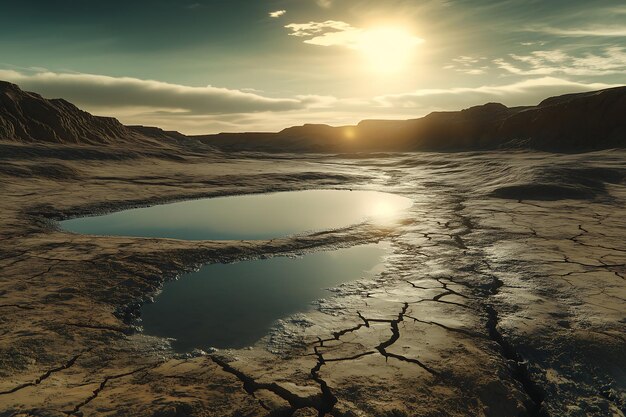
The United States confronts an escalating water crisis, necessitating urgent, multifaceted actions from national policy shifts to individual conservation efforts to safeguard this vital resource and ensure sustainable access for future generations.
The United States, a nation of diverse landscapes and abundant resources, is increasingly confronting a pervasive and pressing challenge: a growing water crisis. This isn’t merely a localized issue confined to arid regions; it’s a complex, interconnected problem affecting urban centers, agricultural heartlands, and delicate ecosystems across the country. Addressing this critical update: the US faces a water crisis – what are the immediate actions needed to conserve resources? – demands a concerted effort from policymakers, industries, communities, and individuals to secure our most fundamental natural asset.
Understanding the scope of the US water crisis
The water crisis in the United States is multifaceted, stemming from a confluence of factors that range from chronic overuse and outdated infrastructure to the undeniable impacts of climate change. It’s a complex tapestry woven with threads of environmental degradation, economic strain, and public health concerns. Comprehending its true scope is the first step toward devising effective, sustainable solutions.
Climate change and its hydrological impacts
Climate change undeniably acts as a primary accelerant of the water crisis. Rising global temperatures lead to more extreme weather patterns, manifesting as prolonged droughts in some regions and intense, infrequent precipitation in others. In the western US, for instance, diminished snowpacks, critical natural reservoirs, are melting earlier and yielding less water, directly impacting river systems like the Colorado, which serves tens of millions of people. This shift in precipitation patterns challenges traditional water management strategies.
Consider the increasing frequency and intensity of droughts across the nation. States like California, Arizona, and Nevada have experienced historic dry spells, leading to significant restrictions on water use, agricultural losses, and heightened wildfire risks. Conversely, other regions face more frequent and severe flooding, which, while seemingly an abundance of water, often results in contaminated supplies and overloaded infrastructure, rather than replenishing accessible reserves.
Aging infrastructure and inefficient use
Much of the water infrastructure in the US dates back many decades, if not a century. Pipes made of materials like cast iron are corroding, leading to significant water loss through leaks. It’s estimated that billions of gallons of treated water are lost daily nationwide due to these inefficiencies – a staggering waste of a finite resource. Beyond leaks, treatment plants often struggle to meet current demand or adapt to changing water quality challenges, compromising the safety and reliability of supply.
Moreover, current water usage patterns in many sectors are far from optimal. Agriculture, the largest consumer of water in the US, often relies on irrigation methods that are not water-efficient. Similarly, residential and industrial sectors frequently adopt practices that result in excessive consumption. Addressing these inefficiencies, from infrastructure upgrades to behavioural shifts, represents a significant opportunity for immediate conservation.
Population growth and increased demand
As the US population continues to grow and urbanize, the demand for water naturally escalates. More people require water for drinking, sanitation, and various domestic uses. This increased demand places additional stress on already strained water sources, especially in rapidly expanding metropolitan areas located in water-stressed regions. The need for new housing, commercial development, and supporting infrastructure all contribute to higher water dependency.
* Urbanization leads to greater demand for potable water.
* Increased manufacturing and services sectors require more water for operations.
* Residential landscapes, particularly in drier climates, often consume significant amounts of water.
The burgeoning demand is not simply about volume but also about the cumulative impact on local aquifers and surface water bodies, which are often drawn down faster than they can be naturally replenished. This unsustainable rate of extraction degrades ecosystems and threatens future water availability.
Contamination and water quality degradation
Beyond quantity, water quality is another critical dimension of the crisis. Industrial pollutants, agricultural runoff (containing pesticides and fertilizers), aging sewer systems, and emerging contaminants like PFAS (per- and polyfluoroalkyl substances) are increasingly finding their way into water sources. These pollutants render water unusable for human consumption or ecosystem health without costly and complex treatment processes. Ensuring clean, safe water is as much a challenge as ensuring sufficient supply. Contamination not only reduces the available supply of potable water but also poses significant public health risks, leading to a higher burden on water treatment facilities and often, higher costs for consumers.
Policy and regulatory actions for water conservation
Addressing the US water crisis requires not just individual action but a robust framework of national, state, and local policies and regulations. These measures can drive systemic change, incentivize conservation, and protect water resources for the long term. Effective policy is the backbone of any comprehensive strategy to manage a resource as vital as water.
Strengthening federal and state water management policies
At the federal level, comprehensive water management policies are essential to coordinate efforts across states, particularly concerning interstate rivers and aquifers. This includes reevaluating and modernizing agreements like those governing the Colorado River, which are proving insufficient in the face of persistent drought. Federal agencies such as the Environmental Protection Agency (EPA) and the U.S. Geological Survey (USGS) play a crucial role in monitoring water quality, conducting research, and enforcing environmental regulations. Strengthening their mandates and funding is paramount.
State policies are equally vital, as water rights and management often fall under state jurisdiction. States need to review and update antiquated water rights laws, many of which were established last century and do not account for current climate realities or population pressures. Policies that promote water recycling, stormwater capture, and efficient agricultural practices are critical.
* Developing interstate water compacts that account for climate change scenarios.
* Increasing federal funding for water infrastructure improvements and resilience projects.
* Establishing state-level water efficiency standards for new construction and appliances.
Incentivizing water-efficient technologies and practices
Government incentives play a significant role in encouraging the adoption of water-saving technologies and practices across all sectors. For agriculture, this might include subsidies for drip irrigation systems, smart sensors that optimize watering schedules, or techniques like no-till farming that enhance soil moisture retention. In urban areas, tax credits for installing low-flow fixtures, greywater recycling systems, and drought-tolerant landscaping can accelerate adoption.
Policies could also include progressive water pricing structures, where higher consumption tiers incur increasingly higher rates, thereby encouraging conservation. Furthermore, promoting research and development into innovative water treatment and desalination technologies, albeit energy-intensive, can secure long-term future supplies, particularly in coastal regions.
Implementing stricter water quality standards and enforcement
The purity of water is as important as its quantity. Stricter regulation on industrial discharges, agricultural runoff, and urban stormwater is necessary to prevent contamination of freshwater sources. This involves updating existing environmental laws, bolstering the capacity of regulatory bodies to monitor and enforce compliance, and imposing meaningful penalties for violations. Investment in advanced wastewater treatment facilities that can remove a broader range of contaminants is also crucial. Public health depends on these measures, as contaminated water sources can lead to widespread illness and increased healthcare costs. Ensuring reliable access to safe drinking water for all communities is a fundamental responsibility that requires unwavering commitment to water quality standards.
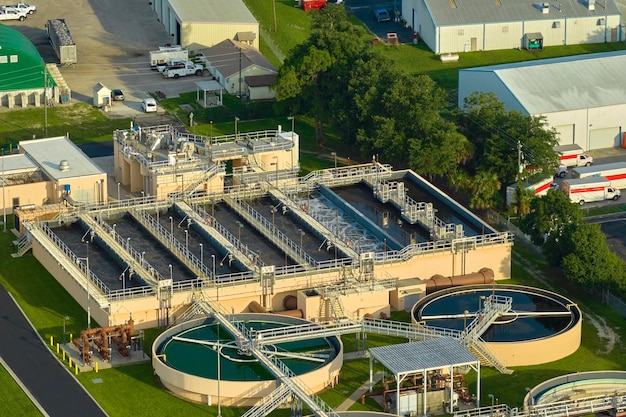
Technological innovations for water conservation
Technology offers powerful tools in the fight against the water crisis, providing innovative ways to monitor, manage, treat, and conserve water. From data analytics to advanced engineering, these innovations are crucial for maximizing the efficiency of every drop.
Smart water metering and leak detection
Traditional water meters are often read manually and offer limited data. Smart water meters, however, provide real-time consumption data to both utilities and consumers, enabling immediate identification of leaks and unusually high usage patterns. This empowers individuals and businesses to take prompt corrective action. For utilities, smart meters allow for more accurate billing, better demand forecasting, and pinpointing leaks in the distribution network, reducing non-revenue water loss. Early detection of leaks, both large and small, can save millions of gallons of water annually.
This technology also supports consumer engagement by providing accessible platforms for tracking water use, setting conservation goals, and receiving alerts for potential problems. It transforms passive consumption into active management, fostering a more mindful approach to water usage.
Advanced wastewater treatment and recycling
Waste water, once considered merely a discharge, is now recognized as a potential resource. Advanced wastewater treatment technologies can purify municipal and industrial wastewater to near-potable standards, making it suitable for a variety of non-potable uses like agricultural irrigation, industrial processes, and even groundwater replenishment. This approach, often termed “toilet-to-tap” in public discourse, is gaining acceptance as a viable way to augment existing water supplies, especially in water-stressed regions.
Technologies like membrane bioreactors (MBRs), reverse osmosis (RO), and advanced oxidation processes (AOPs) are making water recycling more efficient and cost-effective. While initial investment can be substantial, the long-term benefits of reducing reliance on pristine freshwater sources and enhancing water security are significant.
Precision agriculture and irrigation technologies
As the largest water user, the agricultural sector stands to gain immensely from technological advancements. Precision agriculture leverages data from sensors, drones, and satellites to determine the exact water needs of crops, applying water precisely when and where it’s needed, rather than through indiscriminate flood irrigation. Technologies such as drip irrigation, subsurface drip irrigation, and sprinkler systems with high uniformity reduce water loss due to evaporation and runoff.
* Soil moisture sensors: Inform farmers exactly when to irrigate and how much water to apply.
* Variable rate irrigation systems: Adjust water application based on varying soil conditions within a field.
* Weather monitoring systems: Predict precipitation and evaporation rates, optimizing irrigation schedules.
* Drone and satellite imagery: Identify areas of stress in crops, indicating specific water needs.
These technologies not only conserve water but also improve crop yields and reduce energy consumption associated with pumping water, offering a win-win for both environmental sustainability and economic viability. The integration of artificial intelligence and machine learning in these systems further refines water application, leading to even greater efficiencies and reduced water footprint per unit of food produced.
Community and individual actions
While policy and technology provide the framework, the cumulative impact of community-level initiatives and individual choices forms the bedrock of a water-resilient society. Empowering people with knowledge and tools for conservation is paramount.
Promoting water-wise landscaping and gardening
Outdoor water use, particularly for landscaping, accounts for a significant portion of residential water consumption, especially in drier climates. Shifting towards water-wise or “xeriscape” landscaping involves selecting drought-tolerant plants native to the region, optimizing irrigation systems, and incorporating practices like mulching to retain soil moisture. Replacing large expanses of thirsty lawns with permeable surfaces and native plant beds can drastically reduce outdoor water demand.
Community workshops, demonstration gardens, and educational campaigns can equip homeowners and businesses with the knowledge and resources to make these transitions. Local government incentives, such as rebates for turf removal or smart irrigation controller installation, can accelerate adoption and demonstrate a commitment to sustainable landscaping practices.
Encouraging water-efficient appliances and fixtures
Within the home, simple changes in appliance and fixture choices can lead to substantial water savings. Products carrying the EPA’s WaterSense label, for example, meet stringent efficiency criteria without compromising performance. Replacing old toilets with low-flow models, installing water-saving showerheads and faucets, and upgrading to energy-efficient washing machines and dishwashers can collectively conserve thousands of gallons annually per household.
Public awareness campaigns promoting these products, coupled with local utility rebates or incentives, can drive consumer demand and make water-efficient choices more accessible and appealing. The cumulative effect of millions of households making these upgrades would be profound.
Educating and engaging the public on water conservation
Ultimately, sustainable water management relies on a well-informed and engaged populace. Education campaigns, starting from schools and extending into communities, can raise awareness about the origins of local water supplies, the challenges they face, and the simple, impactful actions individuals can take. Explaining the true value of water, beyond its cost, can foster a greater sense of stewardship.
Community engagement can take many forms:
* School curricula: Integrating water conservation into science and environmental studies.
* Public workshops: Providing practical tips for home and garden water saving.
* Citizen science programs: Involving residents in water quality monitoring or watershed restoration.
* Local media campaigns: Utilizing PSAs and news features to spread conservation messages.
By fostering a culture of water conservation, where every community member understands their role and the interconnectedness of water resources, a collective commitment to protecting this vital asset can be forged. This broad civic participation ensures that conservation becomes a way of life, rather than a temporary response to drought.
Protecting and restoring natural water systems
Healthy ecosystems are integral to a resilient water supply. Rivers, wetlands, forests, and aquifers naturally filter water, regulate flows, and provide essential habitats. Protecting and restoring these natural systems is a critical and often overlooked aspect of water conservation.
Wetland preservation and restoration
Wetlands act as natural sponges, absorbing excess water during heavy rains, slowly releasing it during dry periods, and filtering pollutants. They are crucial for recharging groundwater, sustaining biodiversity, and mitigating the impacts of floods and droughts. However, many wetlands have been drained or degraded for development and agriculture. Efforts to preserve remaining wetlands and restore degraded ones are vital for enhancing water quality, increasing groundwater recharge, and improving flood resilience. These projects often involve complex hydrological engineering and ecological restoration, but their long-term benefits are substantial, providing natural infrastructure that is often more cost-effective than concrete alternatives.
Forest and watershed management
Forests play a critical role in the hydrological cycle, regulating streamflows, preventing erosion, and purifying water as it percolates through the soil. Well-managed forest watersheds produce cleaner, more reliable water supplies. Practices such as sustainable forestry, wildfire prevention, and reforestation are essential for maintaining the health of these natural filtration systems. Conversely, deforestation and poor land management can lead to increased runoff, soil erosion, and sedimentation of waterways, degrading water quality and reducing available supplies. Investments in watershed protection programs yield dividends in terms of both water quantity and quality for downstream communities.
Groundwater management and aquifer recharge
Many regions rely heavily on groundwater, extracted from underground aquifers. Overextraction can lead to aquifer depletion, land subsidence, and saltwater intrusion in coastal areas. Sustainable groundwater management involves monitoring extraction rates, implementing regulations to prevent overdraft, and actively recharging aquifers. Artificial recharge techniques, such as directing stormwater or treated wastewater into permeable areas, can replenish groundwater supplies, essentially creating underground reservoirs. This strategy is particularly critical in drought-prone areas where surface water sources are unreliable. Balancing withdrawal with replenishment is key to ensuring long-term groundwater availability, which is often a hidden but crucial component of a region’s water security.
Addressing inequalities in water access and quality
The water crisis disproportionately affects vulnerable communities, often exacerbating existing social and economic inequalities. Ensuring equitable access to safe, affordable, and reliable water is a moral imperative and a critical component of any sustainable water management strategy.
Supporting tribal nations and indigenous water rights
Indigenous tribal nations in the US often hold senior water rights, but inadequate infrastructure, historical injustices, and legal battles have frequently left their communities without reliable access to clean water. Addressing this requires honoring treaty obligations, investing in tribal water infrastructure, and supporting self-determination in water management. Collaborative approaches that incorporate traditional ecological knowledge can also offer valuable insights into sustainable water practices. Rectifying these historical wrongs and ensuring water equity for tribal communities is fundamental to a just and equitable water future for the entire nation.
Investing in water infrastructure for underserved communities
Many low-income communities and rural areas suffer from dilapidated or non-existent water infrastructure, leading to unsafe drinking water, frequent service interruptions, and unaffordable water rates. Significant investment is needed to upgrade or build new water treatment plants, distribution networks, and wastewater systems in these areas. Federal and state funding programs, along with public-private partnerships, are essential to bridge these gaps and ensure that all Americans have access to safe and affordable water, regardless of their socioeconomic status or geographic location. This is not just an issue of convenience but a matter of public health and human dignity.
Ensuring water affordability and combating disparate impacts
Water conservation efforts can sometimes lead to increased water rates, which disproportionately burden low-income households. Policies must be developed to ensure water affordability programs, such as tiered assistance based on income, to prevent water shut-offs and maintain access for all. Furthermore, environmental justice considerations must guide decisions about water infrastructure and pollution control, ensuring that marginalized communities are not disproportionately exposed to contaminated water sources or burdened by the negative impacts of water management decisions. A truly sustainable water future must be an equitable one, where the benefits and burdens are shared fairly across all segments of society.

Innovating for the future: research and development
While immediate actions are crucial, long-term water security heavily relies on continuous investment in research and development. Scientific breakthroughs and technological innovations will be essential to adapt to evolving climate patterns and improve water management capabilities.
Desalination and purification advancements
Desalination, the process of removing salt and other minerals from seawater or brackish groundwater, remains an energy-intensive and costly solution. However, ongoing research is focused on developing more energy-efficient and cost-effective desalination technologies, such as advanced membrane filtration processes and renewable energy-powered desalination plants. Similarly, research into new purification methods for removing emerging contaminants from freshwater sources is vital for safeguarding public health and increasing the range of usable water sources. These innovations could unlock vast new water resources, particularly for coastal and arid regions.
* Forward Osmosis: A lower-pressure membrane process with potential for lower energy consumption.
* Nanotechnology: Developing new materials and membranes for more efficient filtration.
* Bio-inspired solutions: Mimicking natural processes for water purification.
Climate modeling and hydrological forecasting improvements
Accurate climate modeling and hydrological forecasting are critical for anticipating water availability and managing water resources proactively. Improving these models involves integrating more sophisticated data from satellites, ground sensors, and atmospheric monitoring systems. Better long-range forecasts of precipitation, snowpack accumulation, and drought conditions allow water managers to make more informed decisions about reservoir operations, agricultural allocations, and municipal water restrictions. These predictive capabilities are invaluable assets in navigating the uncertainties introduced by a changing climate, enabling a more adaptive and resilient approach to water management.
Data science and artificial intelligence in water management
The sheer volume of data related to water—from consumption patterns to weather forecasts and infrastructure performance—presents a perfect opportunity for data science and artificial intelligence (AI). AI algorithms can analyze vast datasets to identify trends, predict future demand, optimize water distribution networks, and detect anomalies like leaks or contamination events with greater speed and accuracy than human analysis alone. Machine learning can also refine irrigation schedules, suggest optimal water re-use strategies, and even develop early warning systems for water-related hazards. This data-driven approach promises to revolutionize how water is planned, delivered, and conserved, leading to unprecedented levels of efficiency and resilience in water systems.
| Key Area | Brief Description |
|---|---|
| 💧 Infrastructure Modernization | Upgrade aging water pipes and treatment plants to reduce leaks and improve efficiency. |
| 🌱 Smart Agriculture | Implement precision irrigation and drought-resistant crops to minimize agricultural water use. |
| 🏡 Water-Wise Living | Encourage residential water conservation through efficient appliances and landscape changes. |
| 🌍 Ecosystems & Policy | Protect natural watersheds, support equitable access, and strengthen regulatory frameworks. |
Frequently asked questions about the US water crisis
The primary causes include prolonged droughts exacerbated by climate change, aging and inefficient water infrastructure leading to significant losses, unsustainable water consumption patterns in agriculture and urban areas, and contamination of existing water sources from industrial and agricultural runoff, creating a complex challenge that affects water quantity and quality nationwide.
Climate change alters precipitation patterns, leading to more frequent and intense droughts in some regions and increased flooding in others. It also causes earlier and reduced snowmelt, which historically replenished rivers and reservoirs, directly affecting water availability in critical basins and intensifying the strain on existing water supplies across the country.
Technology offers solutions like smart metering for leak detection and consumption monitoring, advanced wastewater treatment for recycling, and precision agriculture tools that optimize irrigation. These innovations enable more efficient water use, reduce waste, and can even augment supplies through purification and re-use, enhancing overall water management and conservation efforts significantly.
Individuals can contribute by installing water-efficient appliances and fixtures, adopting water-wise landscaping, fixing household leaks promptly, taking shorter showers, and being mindful of outdoor water use. Simple behavioral changes combined with efficient technologies can collectively lead to substantial water savings within communities and across the nation, making a real impact.
Unfortunately, no. Access to clean, affordable water is not equitable. Underserved communities, including many tribal nations and low-income areas, often face challenges due to aging infrastructure, contamination, and historical underinvestment. Addressing this requires targeted policies, significant financial investment, and a commitment to environmental justice to ensure access for all populations.
Conclusion
The water crisis in the US is a multifaceted and urgent challenge that demands immediate and comprehensive action. From national policy reforms and technological innovations to community engagement and individual responsibility, a holistic approach is essential. By modernizing infrastructure, promoting efficient use across all sectors, protecting natural water systems, and ensuring equitable access, the nation can build a more resilient and sustainable water future. The time for proactive conservation and astute management is now, securing this indispensable resource for generations to come.
